[Michael finds questions of source and attribution in a cryptic installation that, at times, evades interpretation. — the Artblog editors]
This month, Napoleon Gallery opens its doors and draws its curtains for Thomas Dexter’s Time(After)Time. Viewers walk through a curtained entrance to reveal a nearly empty gallery with two video projections and a small installation that emits a soft glow.
Impenetrable post-production
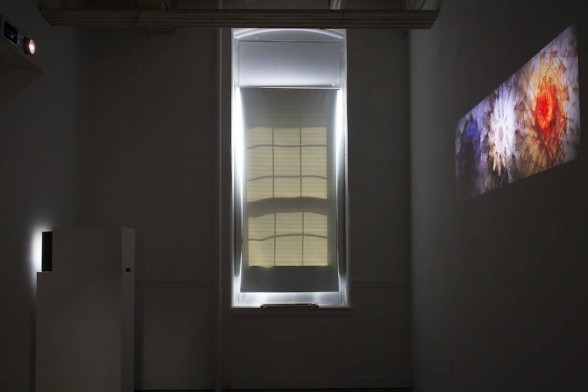
The projection “burningdownthehouse” presents a colorful, almost-abstract panorama of three radiating wheels. Each highly patterned, moving mandala includes a scene–played forward and backward–from Andrei Tarkovsky’s movie “The Sacrifice,” obscured by superimposed, flowing patterns in a persistent state of metamorphosis.
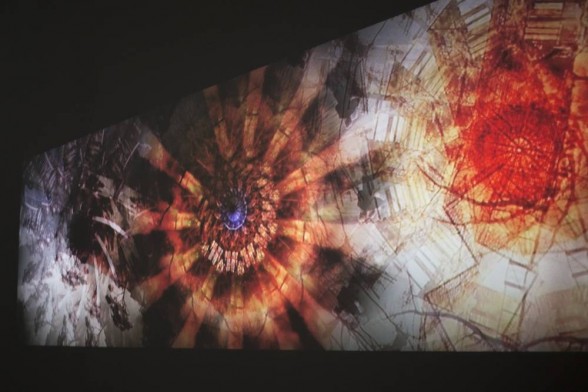
Dexter intentionally overwhelms the viewer with a multitude of post-production additions that muddy the original moving images. The result is like watching “The Sacrifice” through a massive kaleidoscope.
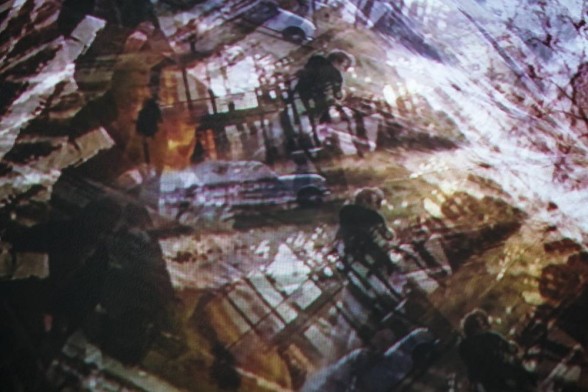
The sensational viewing experience bewilders, and, consequently “burningdownthehouse” evades clear interpretation, at least to this viewer.
Improving on history
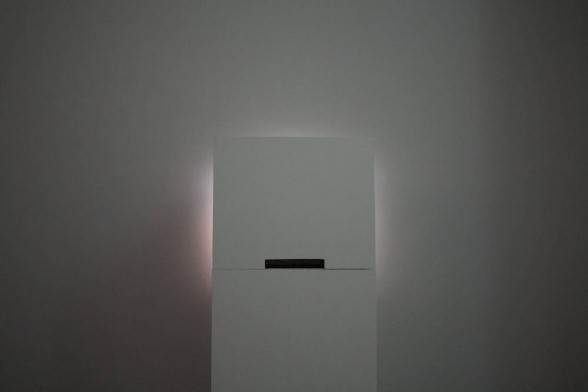
The modest and obfuscatory installation, “This Broadcast Footage Captures the Approximate Moment of My Birth. 1:20 pm April 22nd, 1978,” is a video of the broadcast installed in a womb-like shell pushed against the wall. Small cracks between the box and wall severely restrict engagement with the piece, limiting it to the audio and a subtle blue-green glow that emanates around the box.
Dexter’s installation emphasizes the limited insight that we, the viewers (and perhaps the artist himself), have into personal moments like the artist’s birth. He could play a different clip on the television each day and the impact would remain the same.
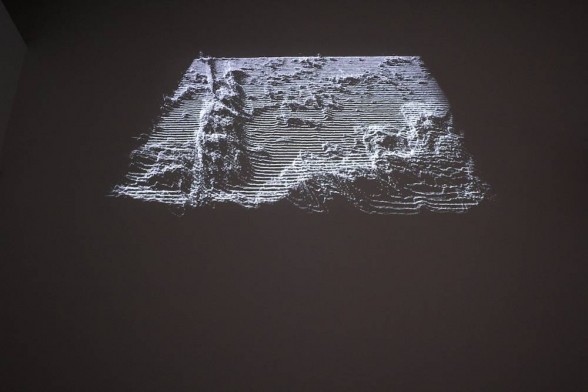
The video projection “Displacement” transforms Sigmund Freud’s home videos from 1930-1939 into a spooky, grayed-out topographic map that feigns three-dimensionality out of the corner of your eye. The title suggests a blatant play on the Freudian theory of displacement, defined as an unconscious defense mechanism wherein an individual substitutes an aspiration or object for a goal previously thought to be dangerous or unacceptable.
As with the rest of the work in Time(After)Time, “Displacement” suggests the artist raising his nose to his source material–in this case, Freud–in an overtly ironic salute.
Dexter’s challenging projections are rich with visual information. The question I pose is: Was the artist discontent with the sources’ original formats, and did he think it necessary to “improve” them with his own post-production work?
We live in a time of sequels, prequels, and re-dos. Dexter’s redux of a seminal film work and two seminal moments, albeit private (Freud’s home movies) and very personal (the sports event at his birth), suggest time’s and history’s malleability. This is true tenfold in today’s digital environment, where any source material is available to anyone to download and rejigger.









